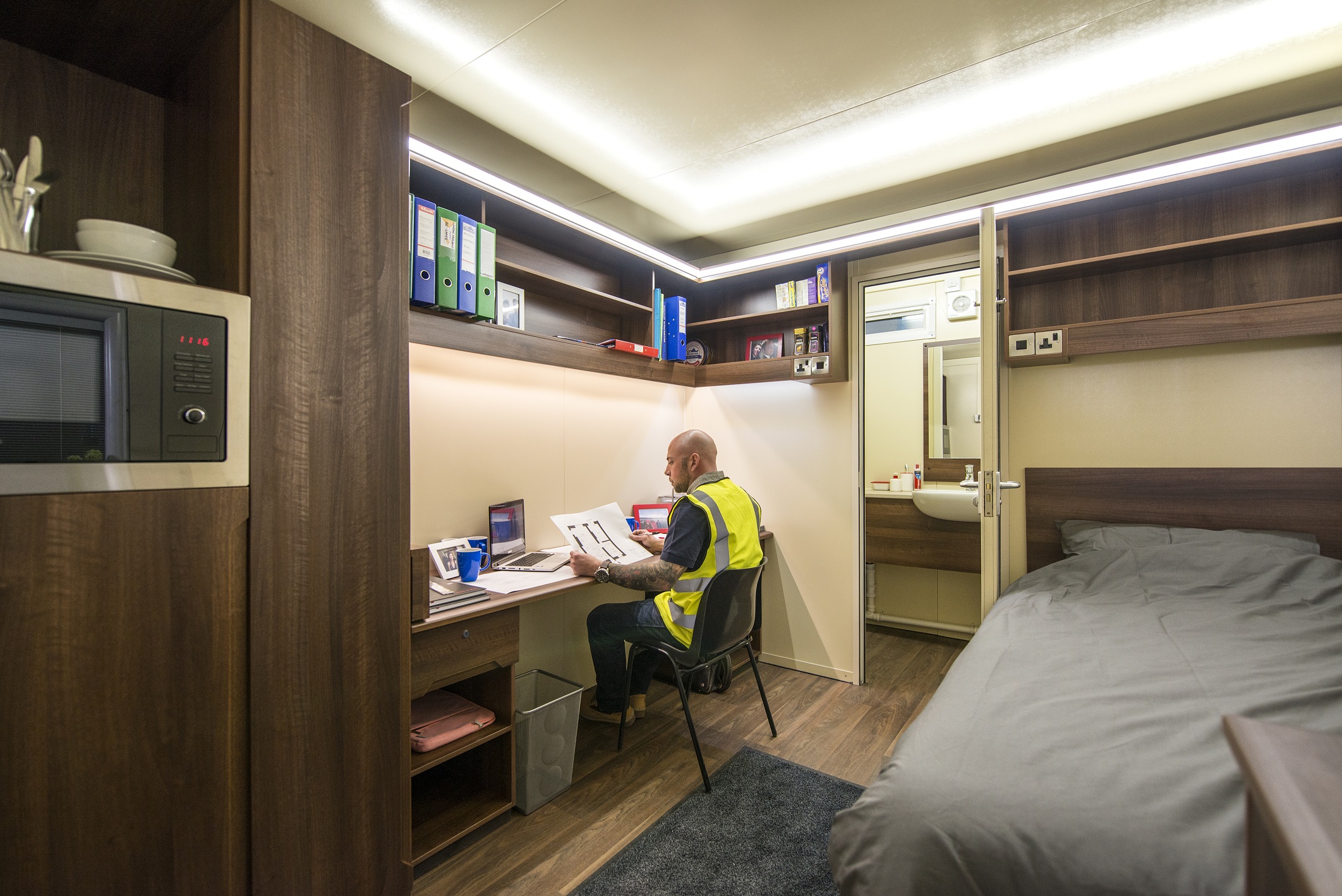Pandemic safety for on-site accommodations
[edit] Introduction
Ensuring on-site accommodation is both safe and fit for purpose is of huge importance. With additional requirements brought to light due to the COVID-19 pandemic, it has never been more essential for employers to follow all of the necessary health and safety steps to protect their workers. When it comes to creating safe on-site accommodation that is also COVID-secure, construction companies need to ensure that they have enhanced health and safety procedures in place.
[edit] Provide additional PPE for all staff
Personal protective equipment (PPE) is incredibly important not just within the workplace but also when staff are using on-site accommodation. PPE such as masks should be provided, regularly disposed of and replaced to ensure employees are protected while they work.
[edit] Keep facilities clean
When providing on-site accommodation for employees, construction companies need to ensure that these facilities are regularly cleaned and disinfected. Before employees enter the facilities a deep, sanitising clean should be carried out. This should be followed by regular cleaning throughout the use of the facilities to prevent the spread of bacteria.
[edit] Make use of safety signs
Not only are standard health and safety measures important in the workplace and in on-site accommodation, but it’s also important that employees are reminded of the restrictions in place to protect them and others against COVID - for example, social distancing measures and the introduction of hand sanitising stations. Strategically place safety signs and instructions around the facilities to make it clear what is expected of employees.
[edit] Stock up on sanitising supplies
All buildings including site accommodation should be well-stocked with hand sanitiser and plenty of other hygiene products to make it easy for employees to regularly keep clean but also keep their living and working spaces clean.
[edit] Limit contact where possible
On-site accommodation for those working in construction provides employees with all of the facilities required in one individual cabin, preventing the need of sharing communal facilities such as toilets, kitchens and showers.
If this isn’t possible and communal facilities are necessary, a rota should be created to limit the number of staff members that are allowed to share the same facilities at once. This also serves as a measure to avoid large numbers of people being on-site at the same time.
[edit] Plan the layout and accessibility of accommodation areas
The layout and occupancy of any on-site accommodation should be carefully planned to ensure that it is in line with the current COVID-19 guidelines. This might require different locations or camps to keep teams isolated from each other.
This is particularly important if becomes necessary to bring in seasonal workers from overseas, as they may be required to quarantine upon arrival. It is also helpful in situations where shielding must take place when someone may need to self-isolate. It is important to pay close attention to who is entering and leaving the site and accommodation areas at all times so it is possible to control and prevent any viral transmission.
[edit] Ensure the correct temperature is maintained
When participants were asked to rate the importance of certain physical factors in the workplace environment, the majority of people chose comfortable temperature as their biggest concern. Air ventilation is equally important, especially in relation to COVID-19, making it essential that on-site accommodation is well-ventilated and the temperature is well maintained to keep workers comfortable and prevent any potential spread of bacteria.
[edit] Related articles on Designing Buildings
Featured articles and news
International Electrician Day, 10 June 2025
Celebrating the role of electrical engineers from André-Marie Amperè, today and for the future.
New guide for clients launched at Houses of Parliament
'There has never been a more important time for clients to step up and ...ask the right questions'
The impact of recycled slate tiles
Innovation across the decades.
EPC changes for existing buildings
Changes and their context as the new RdSAP methodology comes into use from 15 June.
Skills England publishes Sector skills needs assessments
Priority areas relating to the built environment highlighted and described in brief.
BSRIA HVAC Market Watch - May 2025 Edition
Heat Pump Market Outlook: Policy, Performance & Refrigerant Trends for 2025–2028.
Committing to EDI in construction with CIOB
Built Environment professional bodies deepen commitment to EDI with two new signatories: CIAT and CICES.
Government Grenfell progress report at a glance
Line by line recomendation overview, with links to more details.
An engaging and lively review of his professional life.
Sustainable heating for listed buildings
A problem that needs to be approached intelligently.
50th Golden anniversary ECA Edmundson apprentice award
Deadline for entries has been extended to Friday 27 June, so don't miss out!
CIAT at the London Festival of Architecture
Designing for Everyone: Breaking Barriers in Inclusive Architecture.
Mixed reactions to apprenticeship and skills reform 2025
A 'welcome shift' for some and a 'backwards step' for others.
Licensing construction in the UK
As the latest report and proposal to licence builders reaches Parliament.
Building Safety Alliance golden thread guidance
Extensive excel checklist of information with guidance document freely accessible.
Fair Payment Code and other payment initiatives
For fair and late payments, need to work together to add value.
Pre-planning delivery programmes and delay penalties
Proposed for housebuilders in government reform: Speeding Up Build Out.
High street health: converting a building for healthcare uses
The benefits of health centres acting as new anchor sites in the high street.

























